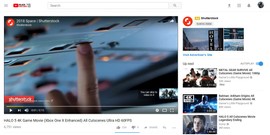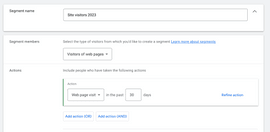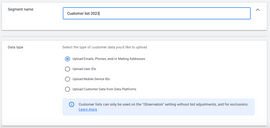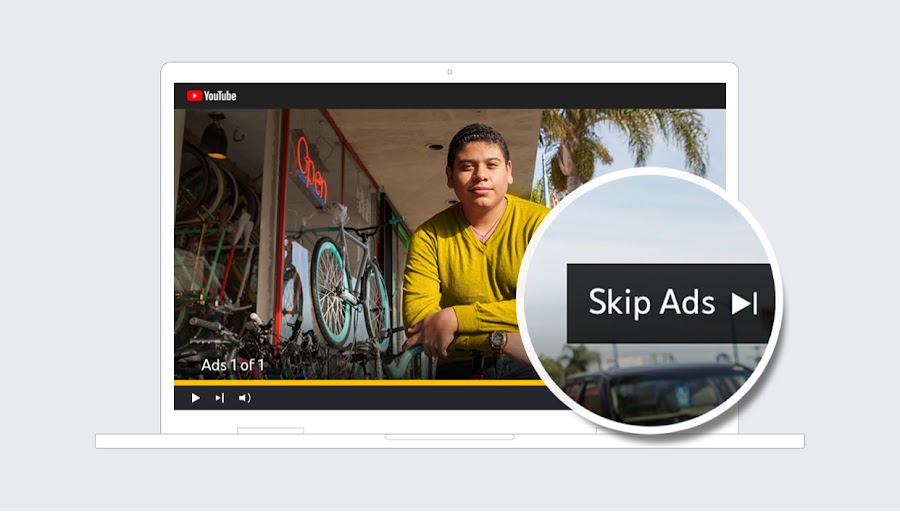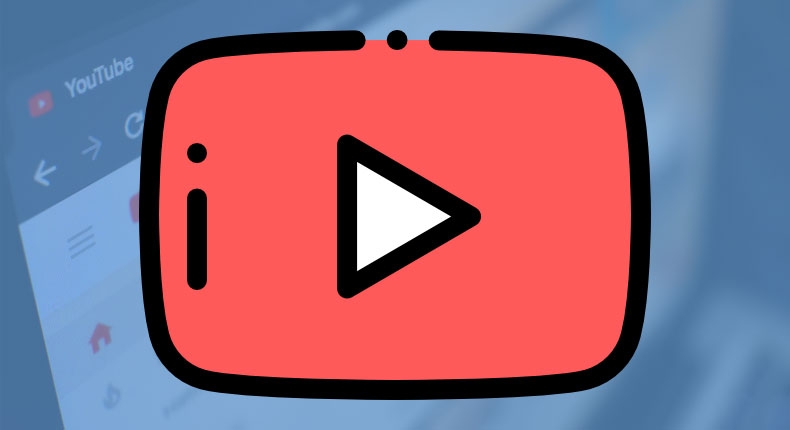YouTube is one of the most popular advertising platforms. 90% of people discover new brands and products on YouTube, while YouTube Shorts now get more than 30 billion views every day. So it makes sense for advertisers to focus on this video marketing platform.
But what’s the most cost-effective YouTube marketing strategy? Many companies run YouTube ads to acquire brand new customers. But reports show that 97% of those who visit a site for the first time leave without buying anything.
YouTube retargeting ads enable you to reach out again to those visitors and remind them why they clicked through to your site in the first place. Plus, you can retarget other customers who discovered your site through other sources like Search and Social to prompt them to buy from you again.
YouTube retargeting is often the most cost-effective video marketing strategy. In this article, you’ll discover how to use YouTube retargeting campaigns effectively, how much it typically costs, and how to make sure you’re reaching the right audiences.
Are YouTube Retargeting Campaigns the Best Strategy in a Recession?
The world is swiftly heading towards recession. And as businesses start to tighten their belts, ad budgets may be frozen or even reduced. So many marketers are now attempting to achieve more while spending less.
YouTube remarketing can help you achieve more revenue growth through its impressive conversion rates compared to other forms of marketing. The proof is in the numbers:
- Promotional remarketing ads can increase purchase rate by 155%
- Retargeted site visitors are 43% more likely to convert
- 2022 is the first year that video ad spend will overtake non-video formats
- Retargeting can increase brand name searches by 1,406% – of six different ad placement strategies, retargeting generated the highest uplift
If you’re planning to maximise your marketing budget in 2023, YouTube retargeting is an essential strategy. Let’s look at how it can give you a better return on your ad spend.
What Are YouTube Retargeting Ads & Why Are They Effective?
There are two types of YouTube remarketing:
- Retargeting those who watch videos on your YouTube channel
- Retargeting those who visit your website with YouTube ads
While the former strategy can boost your YouTube channel subscribers, the latter is more successful for making sales. So we’ll focus primarily on retargeting previous customers and website visitors with the intent of driving more revenue growth.
If you’ve already spent a lot of money acquiring new site visitors, retargeting allows you to make the most of the data you’ve already collected. You can use the information you have to create personalised campaigns, offer promotions, and nudge people through your marketing funnel.
Video ads are more impactful and memorable than display ads. So instead of running basic banner ad retargeting campaigns, it’s often more effective to switch your focus to video.
How YouTube Retargeting Platform Works
YouTube retargeting campaigns use Trueview video ads to serve your ads to the right people. You can choose to display ads in-stream (skippable) or through discovery (non-skippable). You’re charged when someone clicks on your ad or watches it for at least 30 seconds.
To retarget your site visitors on YouTube, you’ll need to add your Google Ads global site tag to each page you want to retarget. This allows YouTube to recognise and run ads for users who have visited those pages.
When you’ve added your site tag, it’s time to create your target audiences. Head to the Audience Manager in Google Ads and create a custom audience segment based on website visitors.
Choose the visit timeframe carefully. Targeting more recent visitors will give you warmer leads, but tends to be more expensive. If this is your first retargeting campaign, you may want to experiment with different pages or timeframes to see which generate the most conversions.
Alternatively, you can upload a list of customers if there are specific people you’d like to retarget. Choose the type of data you have, then upload it as a correctly formatted CSV file.
Want to know how to format your Customer Match CSV upload?
Before you upload, always make sure you have permission to use customer data in this way.
Pros and Cons of YouTube Remarketing Campaigns
YouTube retargeting can lead to a jump in sales, but there are a few disadvantages to be aware of, too. Here are all the major pros and cons of remarketing on YouTube:
Pros:
- Increase conversion rates
- Improve brand awareness
- Make use of your existing first-party data
- Visually demonstrate your product to partially qualified leads
- Get a better ROI than other types of remarketing and non-remarketing ads
- Create targeted campaigns based on specific audience segments
- Learn which visitors are or have the potential to be repeat customers
Cons:
- Seeing the same ad too often can be annoying or distracting
- You might accidentally retarget customers who have just bought from you
- You’ll need to invest in high-quality YouTube video production
How Much Do YouTube Retargeting Ads Cost?
YouTube retargeting ad costs depend on several factors, including:
- Budget
- Audience size
- Bid strategy
- Ad placement.
On average, you’ll pay between $0.05 and $0.30 per view. But to get the most from your ad spend, consider the value of your ad, rather than just the cost.
Research suggests users place higher value on ads that inform or entertain them, while annoying ads decrease their value. High value ads have a proven positive effect on purchasing intention, so make sure your ad is designed to help and/or entertain YouTube users. This may require more upfront investment, but you’re more likely to generate revenue.
Marketing entrepreneur Jason Whaling found the cost-per-view for a 2022 YouTube retargeting ad is just $0.04, while the cost-per-click is $3.34.
Clicks are, after all, more valuable than views. But Jason believes you can control your spend by selecting your audience carefully:
“When it comes to remarketing, I’ve found if you’re targeting people from the past 540-day period, it’s going to be significantly less than if you target people who visited your site in the past 30 days or less. And that simply comes down to audience sizes. The larger the audience you’re targeting, the lower your costs are going to be.”
Lower costs don’t necessarily mean better value. Remarketing to someone who visited your site a year ago is potentially worth less than retargeting someone who visited your site two weeks ago (although remarketing too soon can make someone less likely to buy).
5 YouTube Retargeting Best Practices
If you’re looking for retargeting best practice, or want to know how to improve your existing retargeting campaigns, these five strategies can boost your results.
1. Limit Your Retargeting Frequency
The biggest disadvantage of YouTube retargeting is the fact that seeing the same ad on repeat can become annoying. That’s why YouTube has introduced the frequency cap. This feature allows you to limit the number of times your ads are displayed to each user.
There are two types of frequency cap:
- Impression Capping – limit the number of times your ad is shown without the user interacting with it.
- View Capping – limit the number of times your ad is shown if the user watches it for at least 30 seconds or interacts with it.
Impression capping will stop your ads annoying potential customers. It also weeds out some of those who are unlikely to convert. View capping will help you retain tighter control over your budget, so you’re not serving ads to those who have already interacted with them. Ultimately, using both these caps effectively can reduce your wasted ad spend and add value to your retargeting campaigns.
2. Retarget Your Email Subscribers
It’s not just website visitors you can retarget. Uploading your email lists as new audience segments enables you to retarget them using your first party data, which probably includes valuable information you can use to personalise your campaigns.
This works best if you already have well-segmented email lists. For example, you might not benefit from serving ads to regular customers, since they’re already highly engaged with your brand. But there could be some great retargeting candidates within your lists, such as:
- Previous customers who haven’t made a purchase in a while
- Engaged subscribers who have never made a purchase
- Regular customers if you’re promoting a new product or service
3. Make Use of Skippable Ads
There are several types of YouTube ads, but the key difference is whether they’re skippable or non-skippable.
Skippable ads are ideal if you’re running your first retargeting campaign. They’re typically cheaper than non-skippable ads, and they’ll help you discover who’s interested in your brand or product. This helps you refine your audience and ensure you’re targeting the right people. When you know who’s interested, you can target them with non-skippable ads to give them more information, increasing engagement without wasting money.
Skippable ads are also useful when launching a new retargeting campaign. If you see significant changes in the number of people skipping your ad, this tells you something about the effectiveness of the ad itself. Better data helps you create better ads. When you know your ad has a decent engagement rate, you can scale up your campaign or switch to non-skippable ads.
4. Switch Up Your Ad Format
Make sure you have ads for all kinds of devices and formats. Vertical video is an important one. With the growing popularity of YouTube Shorts, more people are watching YouTube videos on mobile in portrait mode. Don’t miss out on this growing section of your audience by not serving ads in the right format.
There are six YouTube ad types in total, including bumper ads, outstream ads, and masthead ads. Not all of these are as impactful as skippable or non-skippable ads, but they can still reinforce brand awareness. This is especially true if you’re running other video ad types simultaneously.
5. Stop Serving Ads to Bots
Ad fraud is a huge problem for video marketers. Bots that visit your website can easily end up in your audience segments, meaning you can end up retargeting fake users that will never convert. This wastes your budget and skews your conversion stats, so it’s more difficult to make evidence-based decisions.
Lunio improves your performance marketing efficiency by identifying and eliminating invalid users when they visit your website. By stopping them at the source, you’ll avoid serving your videos to non-human traffic. When Lunio identifies an invalid user, it sends that data to all other networks (e.g. TikTok, LinkedIn, Meta) to pre-empt further bad clicks from the same source – helping you save up to 25% of your total ad spend.
Improve YouTube Retargeting ROAS With Lunio
Lunio is designed to help businesses and agencies get as much value as possible from their marketing budget. If you’re struggling to get good returns on your video marketing ad spend, work to refine your video remarketing strategy and use Lunio to make sure you’re not wasting money on bots and fake users that won’t convert.
Get a free trial to see Lunio in action and boost your performance marketing efficiency.
Perfect Bid Management
Discover our 14-day trial to target genuine users and optimise your bid management strategies.

